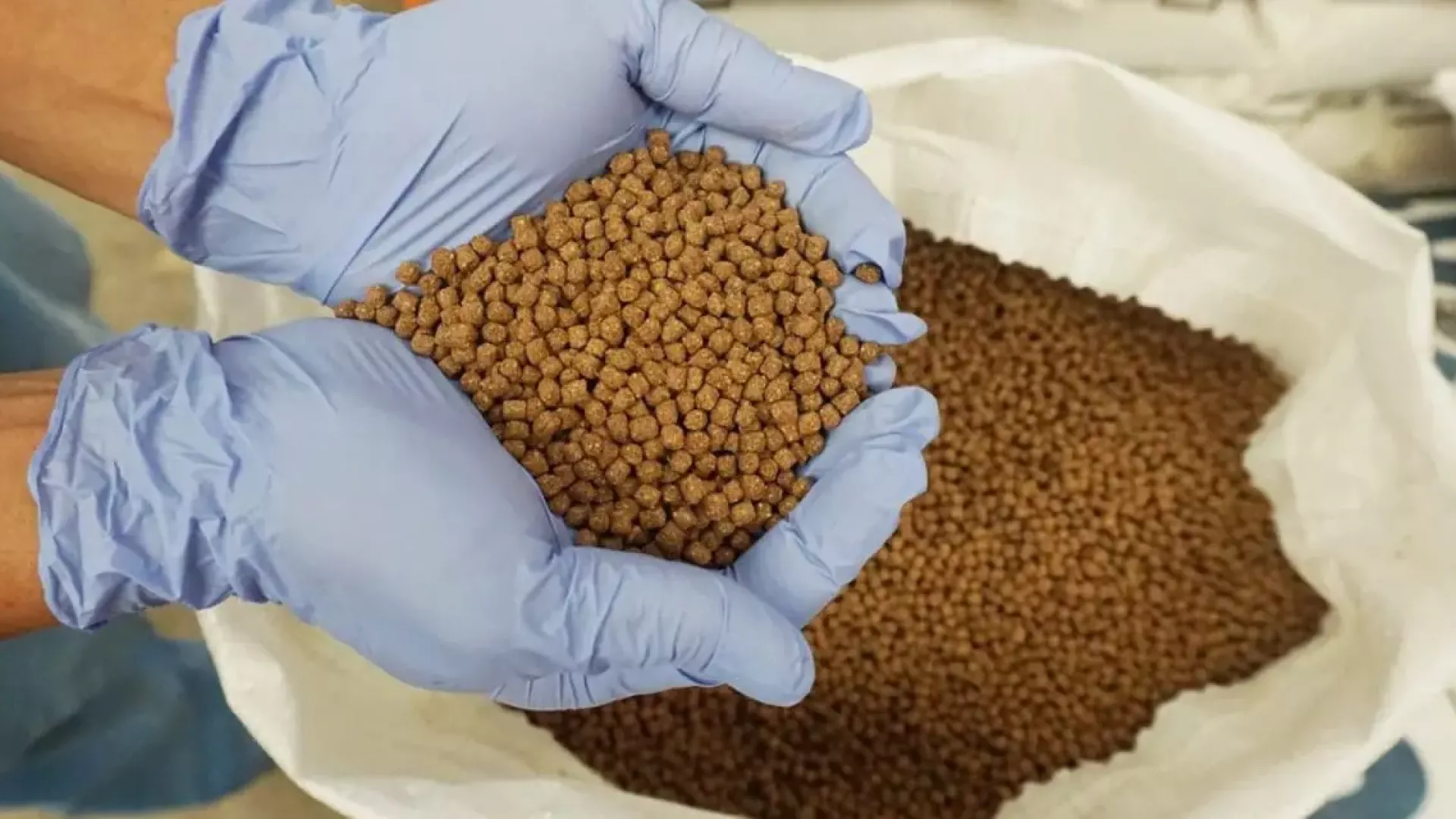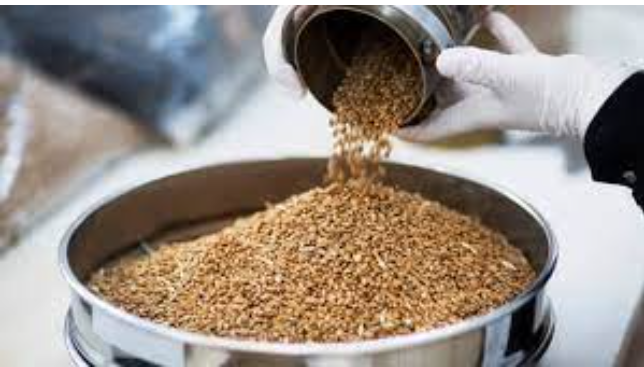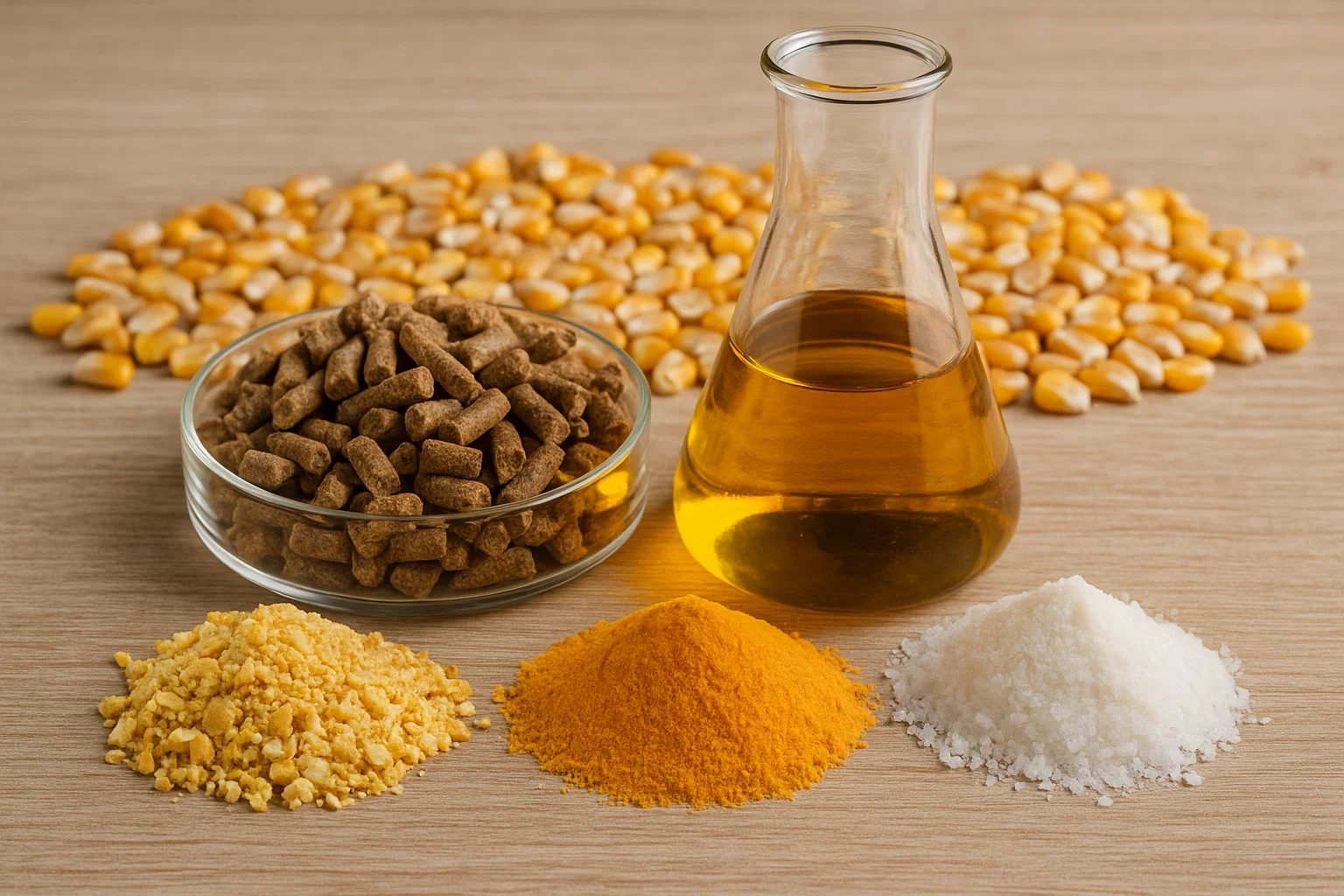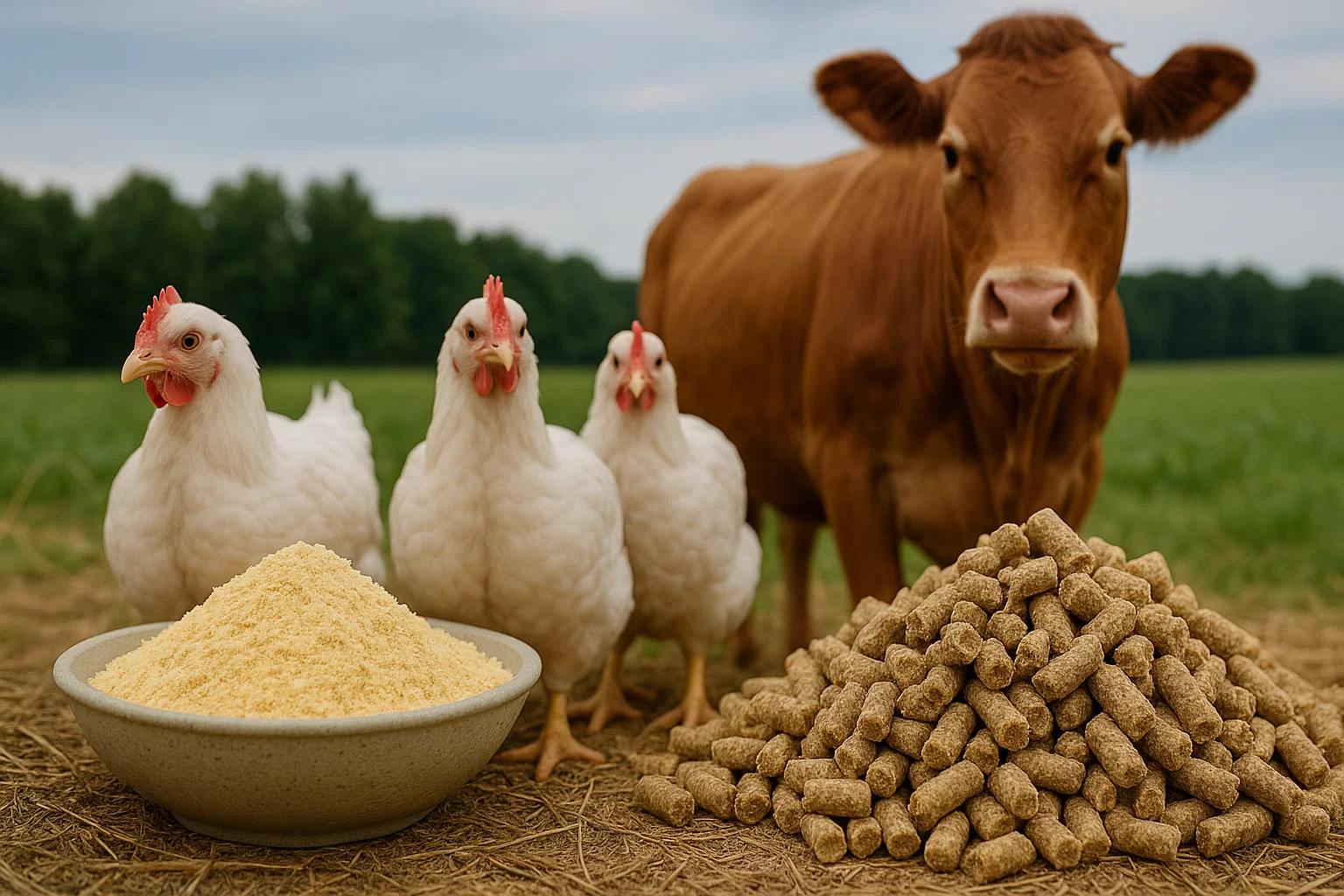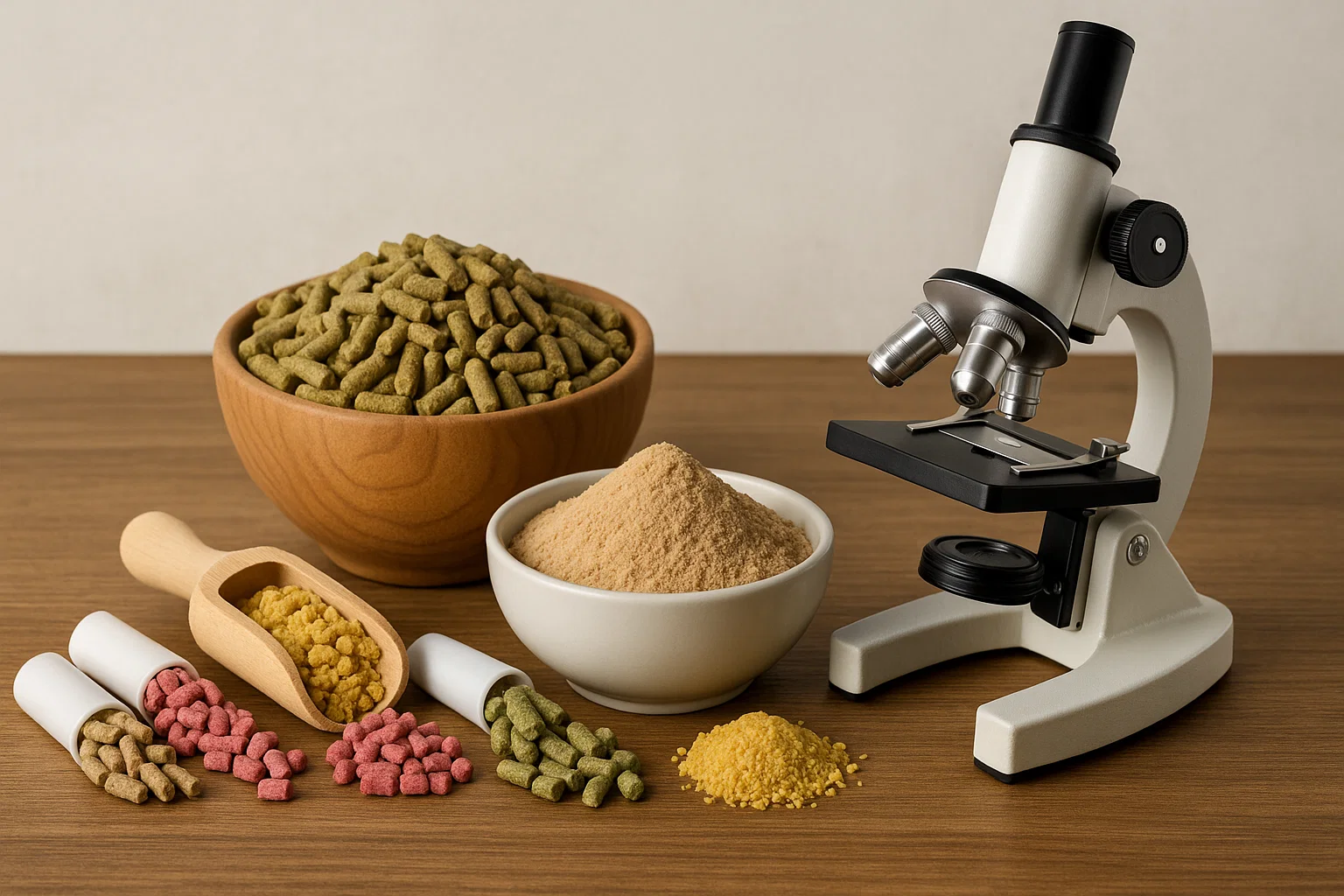What Are Feed Additives and Why Are They Used?
Feed additives have become essential in any professionally run farm, as they enhance the nutritional value of animal feed — ensuring that livestock receive their dietary needs in a balanced and efficient way. The goal isn’t just to make up for nutritional deficiencies, but also to improve overall animal health by supporting digestion and immunity, which in turn leads to higher production levels.
The type of additive required depends on the species you're working with. For example, poultry feed requires a different formulation than cattle feed, since each type of animal has unique characteristics in terms of growth rate, feed intake, and farming method. It’s also important to consider factors like age, weight, and production purpose — whether for fattening, egg production, or dairy farming.
When properly selected, the right additives can significantly improve animal growth rates, and ensure proper nutritional balance, which is the foundation of any successful livestock operation. Getting this part right often results in fewer health problems and noticeably reduced veterinary costs.
The Difference Between Basic and Complementary Feed Additives
Feed additives can be classified into two main categories, each serving a distinct role in improving nutritional efficiency and overall production quality.
The first type is basic additives, which include essential nutrients such as vitamins and minerals. These are commonly referred to as mineral and vitamin additives. They help maintain nutritional balance within the animal’s body and prevent health issues related to micronutrient deficiencies.
The second type is complementary additives, which are designed to support the animal’s internal functions — particularly digestion and immunity. These typically include effective components like probiotics and antioxidants, which play a direct role in boosting immune response and strengthening resistance to disease, especially during stressful periods or fattening cycles.
Choosing between natural vs. chemical additives depends largely on the farming system and the specific goals. Natural additives are generally preferred in safe, long-term nutrition programs, while chemical-based additives may be used when quicker results are needed — though they should always be applied under strict supervision.
The effectiveness of these additives is often reflected in improved feed conversion rates, which is a key performance indicator for livestock projects, showing how efficiently an animal converts feed into weight or production output.
Common Types of Feed Additives
Feed additives come in various forms, each serving a specific purpose that impacts the animal’s health and productivity. That’s why it’s essential for farm managers and nutritionists to understand the different types and how to choose the most suitable one based on the farm’s objectives and livestock needs.
1. Nutritional Additives:
These include essential vitamins and minerals that animals require on a daily basis. They play a key role in bone development, supporting immunity, and regulating internal biological functions. Ensuring their presence helps prevent micronutrient deficiencies, which can lead to serious health issues affecting both growth and productivity.
2. Biological Additives:
This category includes yeast, probiotics, and digestive enzymes. These additives are designed to improve digestion in animals, reduce digestive disorders, and enhance nutrient absorption. As a result, animals can make better use of the feed, leading to better health outcomes and more efficient growth.
Growth and Immunity-Boosting Additives
Among the most important types of feed additives are those specifically designed to increase production efficiency. These growth-promoting additives work by improving overall performance — helping animals gain more weight while consuming less feed. The main goal is to maximize feed conversion rates, so that animals gain more weight in a shorter time with lower feed costs.
There are also additives that enhance immune function, such as antioxidants and immune system boosters. These are especially beneficial during high-stress periods like fattening or intensive production, as they reduce the risk of illness and help maintain herd stability.
Over time, there has been a growing shift toward natural additives over chemical ones, mainly because of their safety profile and the absence of harmful residues in animal products. This is particularly important in commercial operations that aim to reduce antibiotic use and maintain product quality for health-conscious markets.
The Benefits of Feed Additives on Livestock Production
Using feed additives doesn’t just enhance the nutritional value of the ration — it also has a direct impact on production outcomes. The right additive can make a significant difference in the quantity and quality of meat, milk, or eggs. When feed is carefully formulated with the appropriate additives, animals tend to show higher activity levels and increased productivity — without needing to consume more feed.
One of the clearest indicators of this is the improvement in feed conversion rates, meaning the animal can turn a smaller amount of feed into more output — whether that’s body weight or milk yield. Some additives even help enhance the quality of animal products, by improving nutritional content or reducing unwanted fat levels.
Moreover, feed additives play a key role in boosting immunity. Additives like antioxidants and specific biological supplements help strengthen the immune system, reducing the likelihood of illness. A stronger immune response results in a healthier herd, less dependence on medications, and lower overall treatment costs — all of which contribute to more stable and profitable operations.
Reducing Disease and Supporting Herd Health
One of the biggest challenges in livestock production is the rapid spread of diseases within the herd, which can lead to serious losses in both performance and profitability. However, by using the right types of feed additives — such as probiotics, antioxidants, and immune boosters — farmers can significantly enhance the animals’ resistance to infection, keeping the herd healthier overall.
Relying on effective additives also reduces the need for frequent use of medications, leading to cleaner production of meat and milk free from drug residues — a key advantage, especially in export markets or regions where buyers demand high food safety standards.
Additionally, using safe, natural additives contributes to food security and supports the concept of sustainable livestock farming. That means farms can operate longer and more efficiently, without the recurring costs of treatment or production losses due to illness.
How to Use Feed Additives Safely and Effectively
Although feed additives play a significant role in improving animal health and boosting productivity, using them improperly can do more harm than good. That’s why it’s essential to follow the recommended dosages and choose the right type of additive based on the herd — whether you're working with cattle or poultry — as well as the animal’s age and stage of production.
The first step in safe usage is to carefully read the product instructions and confirm that the additive is suitable for the specific animal type. For example, nutritional requirements for cattle differ significantly from poultry, especially in terms of vitamin and mineral concentrations. This must be taken into account when mixing the additive into the feed.
It’s also crucial to ensure the additive is evenly mixed with the ration. Uneven distribution can result in some animals receiving too much or too little of the product, which can disrupt the nutritional balance and negatively affect the overall performance of the herd.
Proper use not only protects animal health, but also improves the efficiency and effectiveness of the additive itself, making its impact on growth, immunity, and productivity much more noticeable.
Common Mistakes in Using Feed Additives
One of the most common mistakes made by livestock producers is overdosing on additives in hopes of getting faster results. However, this can lead to nutritional imbalances or even toxicity. In other cases, farmers may combine incompatible additives — such as mixing natural products with certain chemical additives, which could cause negative interactions.
Another issue is relying on unreliable sources, which can lead to the use of low-quality or adulterated products. This not only compromises animal health but also increases feed costs due to inefficiencies and potential losses.
That’s why it’s always recommended to consult with a specialist or a veterinary nutritionist before introducing any new additive into the feeding program.
How to Choose the Right Additive for Your Farming Operation
Selecting the right feed additive is not a random decision — it has a direct impact on your livestock’s performance and overall production efficiency. The most suitable additive depends on several factors, including the type of animal, the purpose of the operation, and the scale of the project. For example, in broiler poultry farms, the focus is usually on additives that promote rapid weight gain and growth. In contrast, for dairy farms, additives that support digestive health and milk quality take priority.
In addition to technical considerations, it's important to evaluate both economic and nutritional factors. The cost of the additive should be aligned with the expected return. If the product is expensive but doesn’t improve the feed conversion rate or product quality, then it may not be worth the investment. On the other hand, an effective additive can reduce losses caused by poor performance or disease, which saves money over time.
It’s also critical to ensure the additive comes from a reliable and well-known source, especially in larger projects or those targeting export markets. Using certified vitamins and mineral blends that are proven in the field offers consistent results and a higher safety level for the animals.
When Does an Additive Become a Burden?
Despite the importance of feed additives, there are situations where they become a financial burden instead of a performance enhancer. This usually happens when additives are used unnecessarily, or when the base ration is poorly formulated and lacks harmony with the added supplements.
In some countries, certain additives are even banned internationally, and their use can lead to export restrictions or a loss of trust in product quality. That’s why it’s always best to consult with veterinary authorities or agricultural advisors and confirm that any additive you use is permitted and compliant with local and global quality standards.

